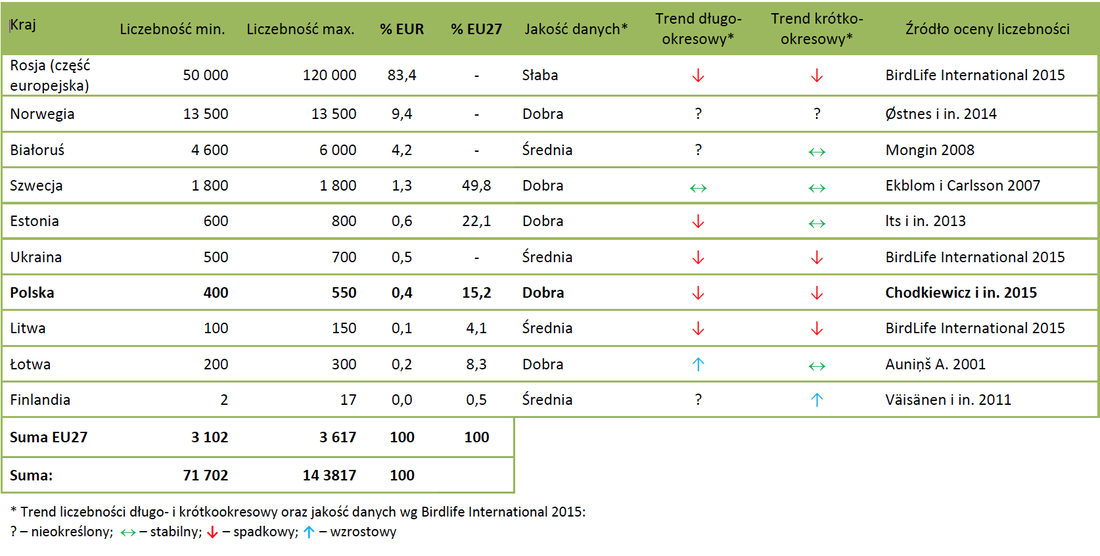|
Great snipe is a nesting species in the Western Palearctic. Within the area of its occurrence, two ecotypes were distinguished both morphologically (Kålås et al. 1997a) and genetically (Ekblom et al. 2004). However, it is treated as a monotype species. The western population occurs in Scandinavia and nests above the upper forest limit. The second, called the eastern, inhabits lowland areas from eastern Poland - constituting the southwestern border of the occurrence area - through Ukraine, Belarus and the Baltic countries to Russia. It is assumed that the eastern border of great snipe’s occurrence area is marked by the river Yenisej (Kålås et al. 1997b). It winters in Africa from the Sahel to the equatorial zone (Cramp and Simmons 1983). The occurrence range of the great snipe breeding population is shown below (Fig. 1).
The global population of the great snipe is estimated at 80 000-660 000 adults, most of them in Russia – 150 000-250 000 males (Birdlife International 2016). In Europe, it is most common in Russia (50 000-120 000 males), Norway (13 500 males), Sweden (1 800 males) and in Belarus (4 600-6 000 males). In the European Union, its number is estimated only at about 3 100 – 3 600 males, which reflects its vulnerable status. The number of great snipes in Poland is estimated at 400-550 males (Chodkiewicz et al. 2015), which is about 15% of the EU population. Taking into account the downward trend in most countries where it occurs and the lack of current estimates, the actual number is closer to the lower limit of the given values (Table 1). Due to the fact that Poland is one of the most important nesting countries in the European Union, it is obliged to take greater responsibility for maintaining the proper conservation status of the great snipe population. |
Projekt „Implementacja Krajowego Programu Ochrony Dubelta – etap I” LIFEGALLINAGO ACTION PLAN współfinansowany jest przez Unię Europejską w ramach Instrumentu Finansowego LIFE (nr umowy LIFE17 NAT/PL/000015) oraz przez Narodowy Fundusz Ochrony Środowiska i Gospodarki Wodnej (nr umowy 266/2018/Wn50/OP-WK/LF/D)
The project "Implementation of the National Action Plan for Great Snipe - stage I" LIFEGALLINAGO ACTION PLAN is co-financed by the European Union under the LIFE Financial Instrument (contract number LIFE17 NAT/PL/000015) and by the National Fund for Environmental Protection and Water Management (contract number 266/2018/Wn50/OP-WK/LF/D)



